#Autofocus System
Explore tagged Tumblr posts
Text
OM System OM3 Review: The Glorious Return of the Olympus EM5
#autofocus#build quality#EM5#focusing#olympus#OM SYSTEM#om system om3#people of color#street photography#x100vi#zone focusing
2 notes
·
View notes
Text










Posting about another lens that i have adapted! Today’s post is about the Tamron 45mm f1.8.
Where do i even start, this is a fantastic lens that feels like it was made for the GFX system. This lens completely covers the sensor with little to no vignette. The out of focus bits are so soft and pleasant, and the colors this lens renders are beautiful!! With the GFX’s 0.79x crop you get about a 36mm (35.55mm) equivalent with the depth equivalent of F1.4. Please note that this is the depth equivalent, not total light transmission!!
This lens is razor sharp wide open and somehow gets even sharper stopped down. A really cool and helpful feature of this lens is the built-in stabilization, which works wonderfully on the GFX50R (no ibis)! Also it’s weather sealed!! THEN ON TOP OF ALL OF THAT you can find these for about $200 or so online!!
NOW, i do need to speak about the cons, there’s not much but i do need to speak on this. The autofocus is definitely on the slower side. Not as slow as other lenses i’ve tested but still slower than the Canon 40 or the Sigma 50! It’s also a bit hit or miss, i usually get a keeper rate of 7/10 with this lens. I feel like sometimes the lens just doesn’t like to play well with either the fringer adapter or doesn’t work well with the 50R’s contrast based AF. I KNOW I KNOW the fringer was designed for the bodies that have phase detect, but i can’t justify dropping that much on a 100 series camera. not yet.
This is a fantastic offering, and a SHARP 35mm equivalent for the GFX that produces some of the most beautiful images i’ve ever created. The slower AF is a pain but it definitely helps you to slow down which helps you stay more involved with the photos you’re taken. You gotta remember that this is “medium format” so you can’t really spray and prey like you can with smaller formats.
This will be a lens that i will always recommend to people try when they’re wanting to adapt non native lenses to their gfx bodies!
#original photographers#photographers on tumblr#new tumblr#artists on tumblr#photogram#photographer#las vegas photographer#fujifilm#tumblr#medium format#camera review#camera blog#lens review#lens blog#tamron 45mm f1.8#120mm film#fujifilm gfx50r#gfx50r#fujifilm x100vi#fuji x100vi#x100vi#fuji x100v#fujiframez#new topographics#bokeh shotz#bokeh obsessed#adapted#photo community#photography community#community
27 notes
·
View notes
Text

Building better infrared sensors: Novel photodiode design boosts responsivity
Detecting infrared light is critical in an enormous range of technologies, from remote controls to autofocus systems to self-driving cars and virtual reality headsets. That means there would be major benefits from improving the efficiency of infrared sensors, such as photodiodes. Researchers at Aalto University have developed a new type of infrared photodiode that is 35% more responsive at 1.55 µm, the key wavelength for telecommunications, compared to other germanium-based components. Importantly, this new device can be manufactured using current production techniques, making it highly practical for adoption. "It took us eight years from the idea to proof-of-concept," says Hele Savin, a professor at Aalto University.
Read more.
8 notes
·
View notes
Text
Yvette Heiser - Click with Confidence: Mastering Photography Fundamentals and Skills
Photography is a craft that merges technical expertise with artistic creativity. Whether you’re a budding photographer or aiming to refine your skills, understanding the fundamentals of photography is crucial. For a comprehensive introduction, consider exploring Yvette Heiser– Learn the Fundamentals of Photography with Yvette Heiser, Texas. Mastering these basics and developing key photography skills are essential steps towards excelling in this captivating medium. In this guide, we’ll explore the core elements of photography and offer practical tips to enhance your skills, ensuring you can click with confidence.

Understanding the Fundamentals of Photography
Before delving into advanced techniques, it’s crucial to grasp the basic principles that underpin great photography. These fundamentals include exposure, composition, and lighting.
1. Exposure
Exposure dictates the lightness or darkness of your photo and is managed through three primary camera settings: aperture, shutter speed, and ISO. The aperture regulates the size of the lens opening, influencing the depth of field. Shutter speed controls the duration the camera’s sensor is exposed to light, affecting motion blur. ISO gauges the sensor's sensitivity to light. Properly balancing these elements is crucial for achieving the ideal exposure and capturing the intended mood and details in your photographs.
2. Composition
Composition involves the strategic placement and arrangement of elements within your frame. Effective composition guides the viewer’s eye and enhances the visual impact of your photos. Techniques such as the rule of thirds, leading lines, and framing can help create more dynamic and engaging images. The rule of thirds involves dividing your frame into nine equal parts and placing key elements along these lines or their intersections. Leading lines draw the viewer’s attention to the subject, while framing uses natural elements to highlight the main subject.
3. Lighting
Lighting is one of the most crucial aspects of photography, as it affects the mood, texture, and clarity of your images. Natural light, such as the golden hour (the hour after sunrise and before sunset), provides a warm, soft glow that can enhance your photos. For indoor photography or controlled environments, artificial lighting like studio lights and reflectors can help you achieve consistent results. Experimenting with different lighting sources and techniques will help you understand how to use light to your advantage.
Developing Photography Skills
Once you’re familiar with the fundamentals, focusing on developing specific photography skills will elevate your work. Here are some key skills to focus on and develop:
1. Focus and Depth of Field
Mastering focus and depth of field involves controlling which parts of your image are sharp and which are blurred. Use your camera’s autofocus system or manual focus to ensure your subject is crisp and clear. Experiment with different aperture settings to achieve varying depths of field, from a completely sharp image to a soft, blurred background.
2. Understanding Color and White Balance
Color theory and white balance are crucial for capturing accurate and visually appealing images. Understanding how different colors interact and affect each other can help you create harmonious photos. White balance adjustments ensure that colors appear natural and true to life, regardless of the light source.
3. Post-Processing Techniques
Post-processing is the art of editing your photos to enhance their quality and correct any issues. Familiarize yourself with software like Adobe Lightroom or Photoshop to adjust exposure, color, and sharpness. Learning basic editing techniques will help you refine your images and bring your creative vision to life.
Practice and Experimentation
To truly excel in photography, regular practice and experimentation are crucial. Embrace the opportunity to experiment with new techniques, explore various subjects, and engage in creative projects. Evaluating your own work and obtaining feedback from others can offer valuable perspectives and support your ongoing growth as a photographer.
Conclusion
By understanding the fundamentals of photography and honing your skills, you’ll be well-equipped to capture stunning images with confidence. Embrace the learning process, stay curious, and let your creativity guide you. For insights on how to effectively use your photography skills for positive impact, Yvette Heiser – Explains Ways To Do Good With Your Photography Skills can be a valuable resource. With dedication and practice, you’ll master the technical aspects of photography and develop a unique style that reflects your personal vision. Click with confidence and let your passion for photography shine through in every shot.
#camera#wedding#moments#pictures#childphotography#photography#yvette heiser#photographer#photographytips#events
8 notes
·
View notes
Text
Best DSLR Cameras for Professional & Beginner Photographers
If you're serious approximately images, investing in a incredible DSLR camera can extensively enhance your competencies and image great. DSLR cameras provide versatility, higher picture sensors, interchangeable lenses, and manual manipulate over settings. Whether you're a newbie or a professional, there may be a DSLR camera that suits your needs. In this guide, we will discover some of the great DSLR cameras to be had today, thinking about elements like performance, functions, and rate.
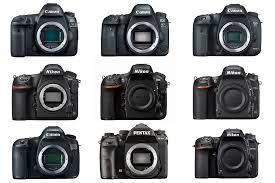
Best budget DSLR cameras for photography enthusiasts
1. Canon EOS 5D Mark IV
Why Choose It?
The Canon EOS 5D Mark IV is an tremendous choice for expert photographers who call for high resolution, surprising low-light performance, and rapid autofocus.
Key Features:
Sensor: 30.4MP Full-Frame CMOS Sensor
Autofocus: Dual Pixel CMOS AF with sixty one-point AF system
ISO Range: 100-32,000 (expandable to 50-102,400)
Burst Shooting: 7 fps
Video: 4K video recording
Connectivity: Built-in Wi-Fi, GPS, NFC
Pros:
✔ High picture resolution and element
✔ Excellent autofocus and occasional-mild overall performance
✔ Great dynamic variety
✔ 4K video functionality
Cons:
✖ Expensive
✖ Heavy body
✖ Crop element in 4K video mode
2. Nikon D850
Why Choose It?
The Nikon D850 is an extremely good all-rounder, offering a excessive-decision sensor, speedy capturing velocity, and brilliant dynamic range, making it best for both landscapes and action photography.
Key Features:
Sensor: forty five.7MP Full-Frame BSI CMOS Sensor
Autofocus: 153-factor AF system
ISO Range: 64-25,six hundred (expandable to 32-102,four hundred)
Burst Shooting: 9 fps
Video: 4K UHD recording at 30 fps
Connectivity: Bluetooth and Wi-Fi
Pros:
✔ Exceptional picture satisfactory and sharpness
✔ Long battery life
✔ Fast and accurate autofocus
✔ High ISO overall performance
Cons:
✖ No built-in flash
✖ Large and heavy
✖ High price tag
3. Canon EOS 90D
Why Choose It?
For those who want a flexible APS-C DSLR with high-pace overall performance, the Canon EOS 90D is a first rate choice, mainly for flora and fauna and sports activities images.
For those who want a flexible APS-C DSLR with high-pace overall performance, the Canon EOS 90D is a first rate choice, mainly for flora and fauna and sports activities images.
Key Features:
Sensor: 32.5MP APS-C CMOS Sensor
Autofocus: 45-factor all-go-type AF machine
ISO Range: one hundred-25,600
Burst Shooting: 10 fps
Video: 4K UHD without crop
Connectivity: Wi-Fi and Bluetooth
Pros:
✔ Excellent decision for an APS-C sensor
✔ Fast and reliable autofocus
✔ Great battery life
✔ Uncropped 4K video recording
Cons:
✖ No in-frame stabilization
✖ Limited dynamic range in comparison to full-frame cameras
four. Nikon D7500
Why Choose It?
The Nikon D7500 is a first-rate mid-range DSLR with superb photo pleasant, proper autofocus, and sturdy battery life, making it ideal for lovers.
Key Features:
Sensor: 20.9MP APS-C CMOS Sensor
Autofocus: fifty one-factor AF system
ISO Range: one hundred-51,2 hundred (expandable to 50-1,640,000)
Burst Shooting: eight fps
Video: 4K UHD at 30 fps
Connectivity: Wi-Fi and Bluetooth
Pros:
✔ Great low-light overall performance
✔ Fast and accurate autofocus
✔ Lightweight for a DSLR
✔ Good battery life
Cons:
✖ Only one SD card slot
✖ No vertical grip choice
five. Canon EOS Rebel T8i (850D)
Why Choose It?
For beginners looking for an affordable but characteristic-packed DSLR, the Canon EOS Rebel T8i is an extremely good entry-stage choice.
Key Features:
Sensor: 24.1MP APS-C CMOS Sensor
Autofocus: 45-factor all-cross-kind AF machine
ISO Range: one hundred-25,600
Burst Shooting: 7 fps
Video: 4K at 24 fps
Connectivity: Wi-Fi and Bluetooth
Pros:
✔ Affordable fee
✔ Easy-to-use controls
✔ Good autofocus for an access-degree DSLR
✔ Vari-attitude touchscreen
Cons:
✖ Limited dynamic range
✖ No in-frame stabilization
✖ Slow burst price in comparison to higher-quit models
6. Pentax K-1 Mark II
Why Choose It?
The Pentax K-1 Mark II is a unique full-frame DSLR that gives climate-sealed construction and built-in stabilization, making it ideal for out of doors photographers.
Key Features:
Sensor: 36.4MP Full-Frame CMOS Sensor
Autofocus: 33-point SAFOX 12 AF system
ISO Range: a hundred-819,2 hundred
Burst Shooting: four.Four fps
Video: Full HD 1080p at 30 fps
Connectivity: Wi-Fi and GPS
Pros:
✔ Excellent build nice with climate sealing
✔ In-body stabilization (uncommon for DSLRs)
✔ High ISO variety for low-mild images
✔ Unique AstroTracer function for night time sky pictures
Cons:
✖ Slower autofocus as compared to competitors
✖ Limited lens selection
✖ Lower video satisfactory than competitors
Choosing the Right DSLR for Your Needs
For Professionals: Canon EOS 5D Mark IV or Nikon D850 are first-rate picks.
For Enthusiasts: Nikon D7500 or Canon EOS 90D gives first rate balance in charge and capabilities.
For Beginners: Canon EOS Rebel T8i is a splendid entry-level digital camera.
For Outdoor and Adventure Photography: Pentax K-1 Mark II with its rugged frame and stabilization is good.
3 notes
·
View notes
Text
Lenovo Idea Tab Pro
The Lenovo Idea Tab Pro, unveiled in March 2025, is a versatile 12.7-inch tablet designed to cater to both students and everyday users. It combines robust performance with user-friendly features, making it a compelling choice in the tablet market.
Design and Display
The Idea Tab Pro boasts a sleek and lightweight design, measuring 291.8 x 189.1 x 6.9 mm and weighing approximately 620 grams. Its 12.7-inch IPS LCD screen offers a resolution of 2944 x 1840 pixels, delivering crisp and vibrant visuals. The display supports a 144Hz refresh rate and HDR10, enhancing the viewing experience with smoother transitions and richer colors. An optional anti-reflection coating is available to reduce glare, improving usability in various lighting conditions.
Performance
At its core, the Idea Tab Pro is powered by the MediaTek Dimensity 8300 chipset, featuring an octa-core CPU configuration: one Cortex-A715 core at 3.35 GHz, three Cortex-A715 cores at 3.2 GHz, and four Cortex-A510 cores at 2.2 GHz. This setup ensures efficient multitasking and smooth performance across applications. The tablet comes equipped with 8GB of LPDDR5X RAM and offers storage options of 128GB (UFS 3.1) or 256GB (UFS 4.0), providing ample space for apps, media, and documents.
Camera Capabilities
For photography and video calls, the Idea Tab Pro features a 13 MP rear camera with autofocus and LED flash, capable of recording 1080p videos. The front-facing 8 MP camera is suitable for selfies and virtual meetings, also supporting 1080p video recording.
Audio and Multimedia
Audio quality is a highlight, with the tablet housing four JBL stereo speakers that support 24-bit/192kHz Hi-Res audio. This setup ensures an immersive sound experience, whether you're watching movies, listening to music, or participating in video conferences.
Battery Life and Charging
The device is equipped with a substantial 10,200 mAh Li-Po battery, supporting 45W wired charging. This large battery capacity ensures extended usage, making it reliable for all-day activities without frequent recharging.
Operating System and AI Features
Running on Android 14, the Idea Tab Pro integrates advanced AI capabilities through Google Gemini and features like Circle to Search with Google. These tools enhance user interaction, providing intuitive and efficient ways to access information and perform tasks.
Connectivity and Additional Features
Connectivity options include Wi-Fi 802.11 a/b/g/n/ac/6e, Bluetooth 5.3, and USB Type-C 3.2 with DisplayPort support. The tablet also features a side-mounted fingerprint sensor integrated into the power button for secure and convenient access. Stylus support is available, catering to users interested in drawing or note-taking.
Pricing and Availability
The Lenovo Idea Tab Pro is available in various configurations:
8GB RAM with 128GB storage, including a pen, priced at
8GB RAM with 256GB storage, including a pen, priced at
12GB RAM with 256GB storage, without accessories, priced at
Additional bundles with accessories like a folio case are available at varying price points. Prospective buyers should verify the included accessories with retailers to ensure clarity.
Conclusion
The Lenovo Idea Tab Pro stands out as a well-rounded tablet, offering a blend of performance, display quality, and user-centric features. Its integration of AI capabilities and support for accessories like a stylus and keyboard pack make it a versatile tool for both educational and everyday use.
#Lenovo Idea Tab Pro#Lenovo Idea Tab Pro price#Lenovo Idea Tab Pro price in bamgladesh#Lenovo Idea Tab Pro bangladesh
3 notes
·
View notes
Text


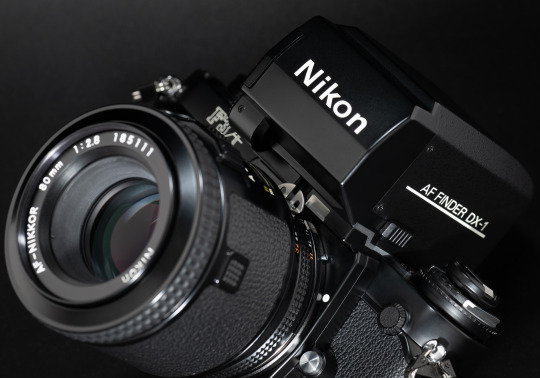

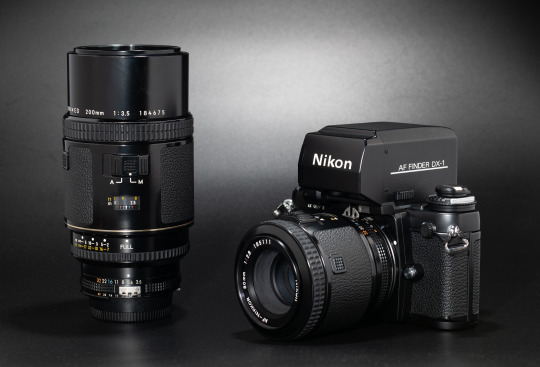
The Nikon F3AF of 1983 – an early, fascinating, ultimately unsuccessful attempt at practical autofocus in a stills camera.
Based on a standard F3 body, it added electrical contacts for two dedicated AF lenses, and a removable, separately-powered DX-1 head, which provided through-the-lens (TTL) autofocus. Focusing elements in the lens are moved by motors built inside the lenses themselves – a concept that is now standard in modern SLR and mirrorless systems.
Basically, take a Nikon F3 and an AT-AT Imperial Walker, smash them together, and you have the F3AF.
8 notes
·
View notes
Text
Looking for the Best Camera for Video? These Are the Top Choices for 2025!
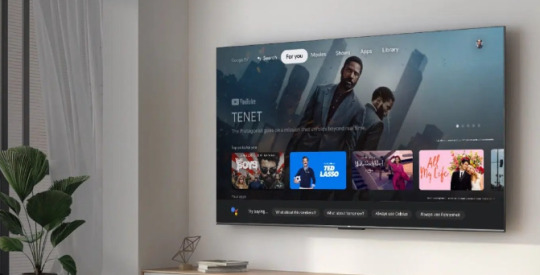
In 2025, the world of videography continues to evolve, with cameras becoming more powerful, portable, and capable of capturing breathtaking footage. Whether you're a professional filmmaker, a content creator, or an amateur enthusiast, choosing the right camera for video is essential. With so many options on the market, it can be overwhelming to determine which one is best suited to your needs.
This guide will walk you through the best cameras for video in 2025, from cutting-edge mirrorless models to professional-grade cinema cameras. We’ll explore the standout features, performance, and price points of each, so you can make an informed decision and start shooting high-quality videos.
1. Why Choosing the Right Camera Matters
When it comes to videography, not all cameras are created equal. The best camera for video needs to offer crisp image quality, smooth frame rates, and advanced video-centric features like high dynamic range, autofocus, and stability. It’s important to know what to look for, whether it’s 4K/8K resolution, fast autofocus, or professional-grade audio options.
Key factors to consider:
Resolution: The higher the resolution, the sharper the footage.
Frame Rate: Higher frame rates ensure smoother motion, especially for action shots.
Low-Light Performance: Cameras with great ISO performance will excel in darker environments.
Stabilization: In-body or lens stabilization can make or break handheld shots.
Lens Compatibility: Choosing a system with versatile lenses is crucial for different shooting needs.
2. Sony Alpha 1 – The All-in-One Powerhouse
Sony continues to dominate the camera market, and in 2025, the Sony Alpha 1 is still one of the best cameras for video enthusiasts and professionals alike. With 8K recording capabilities at 30 fps, this mirrorless camera is a beast in terms of video performance. Its Real-time Eye AF for video ensures that subjects stay sharp even in fast-moving environments.
Key features:
8K 30fps and 4K 120fps video recording.
15-stop dynamic range for rich details in highlights and shadows.
Full-frame sensor for superior low-light performance.
Dual CFexpress card slots for extended recording times.
3. Canon EOS R5C – The Hybrid Marvel
For those who want a camera that excels in both photography and video, the Canon EOS R5C is a top choice in 2025. It offers cinema-grade video performance with 8K RAW recording and comes with advanced cooling for extended video shoots. The R5C bridges the gap between Canon's cinema line and its mirrorless systems, making it perfect for hybrid shooters.
Key features:
8K RAW at 30fps and 4K 120fps.
Dual Pixel CMOS AF for incredibly fast autofocus.
C-Log 3 for extended dynamic range in post-production.
Compact and lightweight design ideal for on-the-go shoots.
4. Panasonic Lumix GH7 – The Best for Content Creators
For content creators who need a more budget-friendly option that doesn’t compromise on quality, the Panasonic Lumix GH7 is a go-to camera. Known for its Micro Four Thirds sensor, the GH7 offers excellent video performance in a compact form factor. It’s perfect for vloggers, YouTubers, and those who need a camera that can shoot high-quality video without the bulk of larger systems.
Key features:
6K video recording at 30fps.
5-axis in-body stabilization for smooth handheld shots.
10-bit 4:2:2 internal recording for professional-grade video quality.
Versatile, lightweight design ideal for travel and vlogging.
5. Blackmagic URSA Mini Pro 12K – The Cinema King
When it comes to professional cinema cameras, the Blackmagic URSA Mini Pro 12K is a game-changer in 2025. Offering 12K resolution, this camera provides an unmatched level of detail for film and high-end production work. With RAW recording and color science, it’s the ideal choice for filmmakers who need the best in image quality and post-production flexibility.
Key features:
12K Super 35 sensor with 14 stops of dynamic range.
Built-in ND filters for shooting in various lighting conditions.
Dual CFast and SD card slots for extended recording.
Blackmagic RAW format for ultimate flexibility in post.
6. Fujifilm X-H2 – The Stylish Performer
For videographers who love Fujifilm’s color science, the Fujifilm X-H2 is a standout model in 2025. It offers 8K video recording in a stylish and retro-inspired design, making it a great choice for videographers and photographers alike. With its APS-C sensor, the X-H2 delivers excellent detail while remaining compact.
Key features:
8K video recording at 30fps and 4K at 120fps.
F-Log2 for a higher dynamic range.
Film Simulation modes for unique color profiles straight out of the camera.
In-body stabilization for steady handheld footage.
3 notes
·
View notes
Text
Logitech Cámara web 720p Pro 9000


About this item
Formerly known as the Logitech QuickCam Pro 9000, but now includes new Logitech Vid software that dramatically simplifies video calling
Ultra-smooth AutoFocus with Carl Zeiss lens system for sharper, fluid video
HD video recording and 2-megapixel sensor capture detailed 16 x 9 widescreen videos and up to 8-megapixel photos
RightLight2 Technology adjusts brightness for perfect images, even in dim light
Premium built-in microphone with RightSound Technology for crystal-clear conversations
LINK HERS
2 notes
·
View notes
Text
Pentax 645Z Review
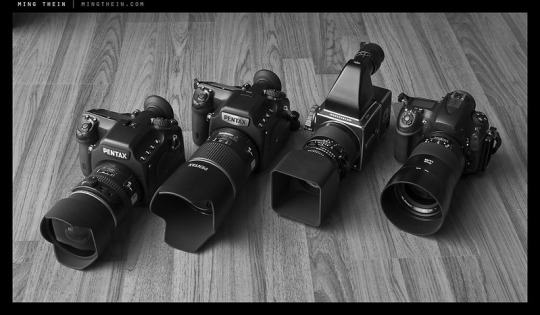
Medium-format cameras offer truly spectacular resolution, but until now, it's always come best camera alongside a difficult compromise. With the Pentax 645Z, that changes. Building on 2010's 645D, the Pentax 645Z offers features that are rare or in some cases unique in a medium-format camera. Pick up its weather-sealed body, and you'll find both live view and video capture on offer, not to mention an extremely wide sensitivity range, 27-point phase-detect autofocus system -- and compared to rivals, very swift performance too! And of course, you'll get the incredible detail-gathering capability of medium-format, plus a really big, bright viewfinder. Is it time you considered moving up from full-frame? Read on and find out!
Pros Phenomenal resolution and detail; Great high ISO performance; Rugged, weather-sealed body; Huge, bright viewfinder; Fast autofocus works well in low light; Swift performance for a medium-format camera; Good battery life; Shoots Full HD video
Cons Quite bulky compared to an APS-C or full-frame DSLR; Autofocus points clustered near center of frame; Most lenses aren't weather-sealed or optimized for digital; Prone to aliasing artifacts (but so are most high-end cameras these days); Attracts a lot of attention from passers-by
Price and availability Available since June 2014, the Pentax 645Z is priced at US$8,500 body-only.
Back in early 2010, Pentax launched the 645D, a medium-format digital SLR that it had been developing for the previous five years. It might have been a long time coming, but it was nonetheless exciting for it. The 645D leapfrogged rivals Canon, Nikon and Sony with two-thirds greater sensor area than a full-frame sensor, yielding a unique look and shallower depth of field. At the same time, it was vastly more affordable than offerings from medium-format makers like Hasselblad and Phase One, yet rugged enough to be used in the field.
Pentax 645Z Review -- Front view with lens The reason Pentax -- since taken over by Ricoh -- could offer its camera at a more attractive price-point than other medium-format products was pretty simple. Much of the design work for the 645D could be shared with the company's mass market, APS-C DSLRs, where Hasselblad and Phase One -- neither of which sells consumer SLRs -- had to bear the entire cost of development solely with their medium format products.
While Pentax lacked (and indeed, still lacks) a full-frame DSLR, the 645D served both as an aspirational model for the enthusiasts to look up to, and as something genuinely different to attract pros for whom that resolution and medium-format look was more important than high-speed capture. And boy, did it ever offer a lot of resolution by 2010 standards. (In fact, it's only recently that we've started to see cameras with smaller sensors catching up.) When we first put the 645D in our lab, we were amazed to find that it picked up details we'd never even noticed in our test scenes -- details that we couldn't even see with our own eyes, until we pulled out a magnifying glass to confirm them.
Pentax 645Z Review -- Weather seals Just like the medium-format film cameras in whose footsteps it followed, the 645D was never going to be a mass-market camera. Medium-format is an even smaller niche than it was in the film days, but the 645D was nonetheless a very important camera for the company, and its followup -- the Pentax 645Z -- is no less important.
Just like its predecessor, the Pentax 645Z shares much with Ricoh's flagship APS-C DSLRs -- and with four years of development having taken place on the APS-C front since the 645D was launched, there was no shortage of new features for it to inherit. But the most important feature of them all is at its very heart, a brand-new, Sony-sourced 51-megapixel CMOS image sensor. It's coupled to a PRIME III image processor, as first seen in the K-3, and the 645Z also inherits that camera's 27-point SAFOX 11 autofocus and 86,000 pixel RGB metering systems.
The 645Z's new image sensor allows a spectacularly wide sensitivity range, especially by medium-format camera standards, covering everything up to ISO 204,800 equivalent. It also provides both live view and Full HD movie capture capabilities, neither of which its predecessor was capable of. And performance has taken a big step forwards, at least compared to other medium-format cameras. This still isn't a sports shooter, but it'll shoot at almost triple the speed of the 645D. You'll also be able to review photos post-capture in less than half the time.
2 notes
·
View notes
Text
Forget Samsung: Xiaomi 14 Series Ready to Dethrone Galaxy S24 as King of Android

The Xiaomi 14 series has been officially unveiled in China, and it looks like it will be the Android flagship series to beat in 2023. The new Xiaomi 14 and Xiaomi 14 Pro come with improvements across the board, including bright displays, the latest Snapdragon 8 Gen 3 chipset, upgraded cameras, super-fast charging, and a titanium frame option for the Pro model. While we wait to get the Xiaomi 14 and Xiaomi 14 Pro in for full reviews, here is a preview of the key specs and features to expect from Xiaomi's latest flagships. We'll update this preview once we have the devices in hand and can provide more details from our hands-on testing. Xiaomi 14 Series Key Specs Xiaomi 14Xiaomi 14 ProSize, Weight152.8 x 71.5 x 8.2 mm, 188 g161.4 x 75.3 x 8.5 mm, 223 gDisplay6.36" OLED, 120Hz, 3,000 nits6.7" OLED, 120Hz, 3,000 nitsProcessorSnapdragon 8 Gen 3Snapdragon 8 Gen 3RAM, Storage8/256GB, 12/256GB, 12/512GB, 16/1TB LPDDR5X12/256GB, 16/512GB, 16/1TB LPDDR5XCameras50MP main (f/1.6), 50MP ultra-wide f/2.2, 50MP 3.2X telephoto f/2.0, 32MP front50MP main (f/1.42-4.0), 50MP ultra-wide f/2.2, 50MP 3.2X telephoto f/2.0, 32MP frontBattery4,610 mAh4,880 mAhCharging90W wired, 50W wireless120W wired, 50W wireless The highlights include the latest Snapdragon 8 Gen 3 chip, fast LPDDR5X RAM, bright 3,000 nit displays, and extremely fast charging speeds. The Pro model also introduces a variable aperture main camera and titanium frame option. We'll need to thoroughly test out these phones to see how all these specs translate to real-world performance and experience. Stay tuned for our full reviews! Xiaomi 14 Series Design The Xiaomi 14 series retains the premium design identity of the previous generation, with curved displays and backs, rectangular camera modules, and slim profiles. The Pro model introduces an eye-catching new titanium frame option. Both phones also utilize Xiaomi's new proprietary Ceramic Glass material on the front and back for added durability.
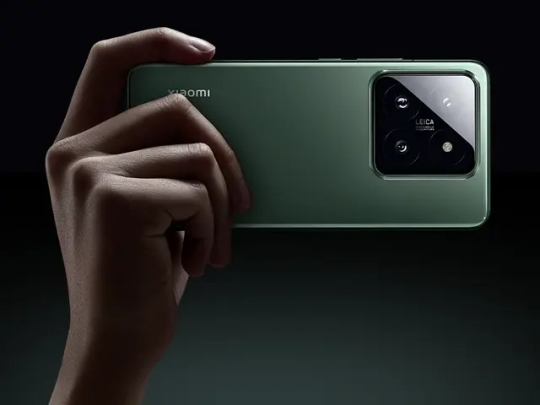
Xiaomi 14 Pro Color options include: - Xiaomi 14: Jade Green, Black, White, Pink - Xiaomi 14 Pro: Titanium, Black, White, Green

Xiaomi 14 Xiaomi 14 Series Cameras The Leica-tuned cameras on the Xiaomi 14 series bring some exciting upgrades. The main 50MP sensor on the Pro model features a variable f/1.4-f/4.0 aperture for more flexibility. The new 50MP ultrawide camera promises improved quality. The telephoto camera uses a floating lens element for better edge-to-edge sharpness. New AI tricks like eye tracking autofocus and Night OIS should also help boost photography. We look forward to putting these new camera systems through their paces.
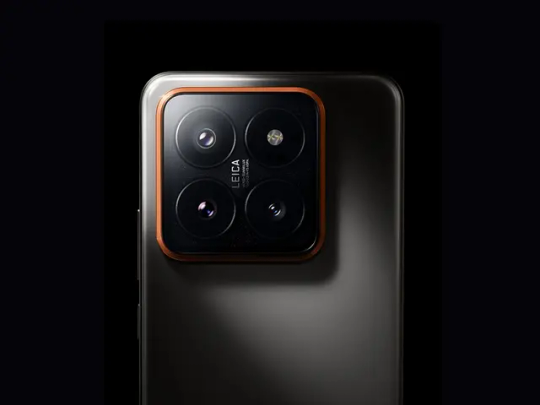
Xiaomi 14 Series Software The latest Xiaomi 14 series introduces an exciting shift from MIUI to the new HyperOS. Running on Android 14 out of the box, HyperOS promises an improved user experience focused on four key areas: performance optimization, seamless connectivity, predictive intelligence, and robust security. While full details on HyperOS are yet to come, early reports suggest substantial AI and on-device neural processing. This enables advanced contextual awareness and personalization. Software support remains unconfirmed, but if last year's models are any indication, the Xiaomi 14 line should receive major OS updates for at least four years. Xiaomi 14 Series Availability The Xiaomi 14 and 14 Pro launched first in China, but global availability typically follows a couple months later. Pricing is also usually a bit lower for global markets. We expect the Xiaomi 14 series to compete head-to-head with the Galaxy S23 series in many regions later this year. The Xiaomi 14 in particular looks like excellent value if they can hit a competitive price point. In summary, the Xiaomi 14 and 14 Pro bring some exciting upgrades and look very promising on paper. We can't wait to get them in hand for full reviews. They have a good chance of being the top Android flagships of 2023 if their real-world performance lives up to the hype. Stay tuned for our detailed analysis. Read the full article
12 notes
·
View notes
Text
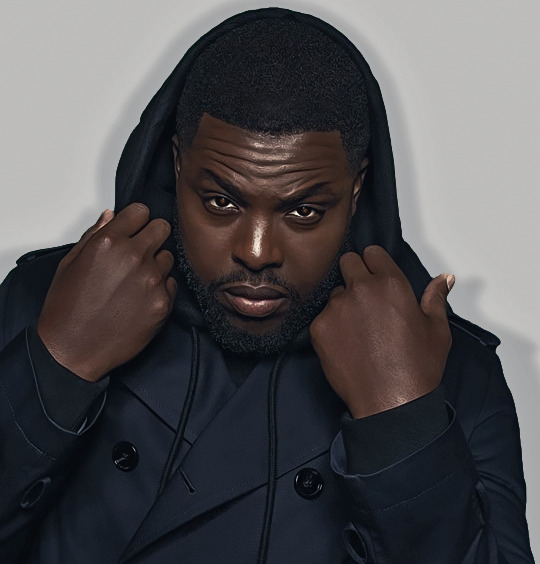
Title: 𝑊𝑖𝑛𝑡𝑒𝑟 𝑀𝑜𝑜𝑛 🌕❄
Chapter 21: Only You
Chapter Summary: Inya finally finds out what it means to be an omega, in all capacities.


Warnings: MATURE, EXPLICIT 🔞 ‼🚨READ THE TAGS🚨‼ Dead Dove: Do Not Eat, Rape/Non-con Elements, Dubious Consent, Extremely Dubious Consent, Alpha/Beta/Omega Dynamics, Recreational Drug Use, Blood and Violence, Smut, Forced Bonding, Claiming Bites, Mating Cycles/In Heat, Knotting, Breeding Kink, Other Additional Tags to Be Added, Wakanda AU, Dark AU
❥Chapter Index ❥


It must have been somewhere in the noon hour when her mind groggily climbed to awareness. Inya could barely remember what she’d dreamed about—if she’d dreamed at all. She woke with her face mashed into one of the pillows, her skin warm and stuck to the covers with a thin layer of perspiration. She kicked the sheets down off her body, shuddering at the feel of them against her skin. They usually felt soft and pleasant, but this morning, it was like sandpaper.
At least the cool air felt nice.
Everything felt fuzzy; as if someone had turned the autofocus off in her brain. Her thoughts were ordering themselves slowly, booting up like an old Windows XP operating system. She began to put together cliff notes of yesterday evening’s events; dinner with M’Baku’s family—with Esihle and N’Kosi being surprise guests. She remembered talking with Enitan more than once…And fighting Farai. It made a flash of anger cease her throat in a growl. Her chin was still sore where that bitch had scratched her. But remembering Enitan’s probing fingers on her face replaced the anger with something else entirely.
❥Read The Rest On Ao3 ❥
#M'Baku#M'BakuxReader#M'BakuxBlackReader#M'BakuxOC#Black Panther#Black Panther Wakanda Forever#BPWF#My Fics#alpha/beta/omega dynamics#a/b/o dynamics#a/b/o#omegaverse#ABO#ao3#ao3 fanfic#ao3 writer#Dead Dove#Dead Dove Do Not Eat#Fanfiction
2 notes
·
View notes
Text










Canon 40mm f2.8 Adapted to my GFX50R
This is a match made in heaven, i believe that this is currently (as of February 18th 2025) the smallest digital medium format combo out there. This set up is close to perfection for me!
With the 40mm adapted to GFX you get the focal equivalent of 32mm (31.6mm with the .79x crop) with the depth of field equivalent of F2.2. Please note that even though the DoF equiv. is f2.2 that doesn’t mean that you’ll be letting in the same amount of light as a lens with a f2.2 aperture.
Corner sharpness is fantastic! F2.8 can get smeary sometimes but when stopped down the IQ is sharp corner to corner. This lens handles the 4:3 sensor excellently! As of lately i haven’t been someone who cares too much about IQ and pixel peeping (which is why im totally fine with adapting these older lenses) but this lens is so incredibly sharp paired with this system that i’m always blown away that you can get this level of detail with a $100 lens.
There are a couple cons with this lens. first one being wide open at f2.8 IQ suffers a bit, i find center sharpness is more than usable but in some situations it can get pretty soft looking. I personally don’t like the out of focus bits on this lens so i usually shoot it stopped down. There’s no weather sealing so you do need to be careful, fortunately the Fringer adapter is weather sealed but i still don’t want to risk frying these electronics. Autofocus is pretty decent considering i’m adapting this to a Contrast based system, it’s definitely on the faster side for adapted lenses and it’s pretty accurate but it’s still very slow compared to modern tech. i feel like this shouldn’t be in the cons sections as it’s more of dig towards the older GFX50R af system but i still wanted to bring it up for those who are curious.
This is a lens that i highly recommend every GFX user who is looking for a cheap, lightweight lens that’s not a native GF lens! If you’re use the older 50 series AF system then you’ll know how to work with this lens. I feel like this combo is something truly special though, you don’t usually see digital medium format cameras this size. This is the closest you can get to a medium format x100, well until fuji drops the GFX100RF.
#blog#review#photo review#camera review#lens review#original photographers#photographers on tumblr#new tumblr#artists on tumblr#photogram#cameras#canon 40mm f2.8#medium format#lookslikefilm#gfx50r#fujifilm#fujifilm gfx50r#fujiframez#fuji x100vi#fuji x100v#point and shoot#120mm film#las vegas photographer#photographer#photography community#tumblr
16 notes
·
View notes
Text
Yvette Heiser - The Impact of Photography on Choice and Perception
In the modern world, where visual media dominates our daily lives, the influence of photography on our perceptions and choices cannot be overstated and Yvette Heiser- Explores How Photography Influences Our Perceptions and Choices, “Perceptual Frames: The Impact of Photography on Choice and Perception,” delves into this fascinating subject, exploring how photographs shape our understanding of reality and influence our decisions.
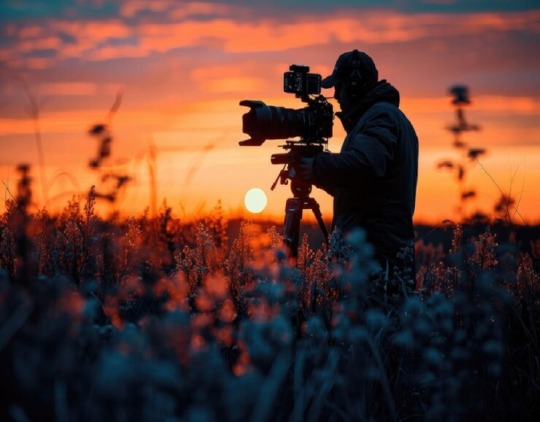
The Power of Visuals
Photography, as an art form and a medium of communication, holds a unique power. Unlike text, which requires interpretation and imagination, photographs provide a direct visual representation of the world. This immediacy can evoke strong emotional responses and create lasting impressions. Heiser argues that this power of photography lies in its ability to frame reality in specific ways, guiding our perceptions and, consequently, our choices.
Framing Reality
One of the central themes in Heiser’s work is the concept of “framing.” In photography, framing refers to the way a photograph is composed, including what is included or excluded from the image. This framing can significantly influence how viewers interpret the photograph. For instance, a photograph of a bustling city street can evoke feelings of excitement and energy if framed to highlight the crowd and movement. Conversely, the same street can appear lonely and desolate if framed to focus on an isolated individual.
Heiser explores how photographers use framing to convey particular messages and emotions. By choosing specific angles, lighting, and subjects, photographers can manipulate the viewer’s perception. This manipulation is not inherently negative; it is a tool that can be used to tell compelling stories, raise awareness about social issues, or simply capture the beauty of the world.
The Role of Context
Context plays a crucial role in how we interpret photographs. A photograph of a smiling child can evoke feelings of joy and innocence. However, if we learn that the child is in a war-torn region, our perception of the image changes dramatically. Heiser emphasizes that understanding the context in which a photograph is taken and presented is essential for accurate interpretation.
In today’s digital age, where images are often shared without context, this becomes even more critical. Social media platforms are flooded with photographs that can be easily misinterpreted or taken out of context. Heiser’s work encourages viewers to seek out the stories behind the images and consider the broader context before forming judgments.
In the age of advanced autofocus systems, the art of manual focus remains an invaluable skill for photographers, Yvette Heiser–How and when to use manual focus? A renowned photographer and educator, emphasizes the importance of mastering manual focus to achieve creative control and precision in photography. This article explores the advantages of manual focus, when to use it, and how to effectively implement it in your photography practice.
The Advantages of Manual Focus
Manual focus allows photographers to have complete control over the focus point, enabling them to achieve the desired sharpness and artistic effects. Unlike autofocus, which relies on the camera’s algorithms, manual focus lets you decide exactly where to place the focus. This can be particularly beneficial in the following scenarios:
Low Light Conditions: Autofocus systems often struggle in low light, hunting for focus and sometimes failing to lock onto the subject. Manual focus allows you to bypass these limitations and achieve sharp images even in challenging lighting conditions.
Macro Photography: When shooting close-up subjects, the depth of field is extremely shallow, making precise focusing crucial. Manual focus enables you to fine-tune the focus point, ensuring that the critical parts of your subject are sharp.
Portrait Photography: For portraits, especially when using wide apertures to create a shallow depth of field, manual focus allows you to ensure that the eyes of your subject are perfectly sharp, which is essential for impactful portraits.
Creative Control: Manual focus gives you the freedom to experiment with focus and blur, creating unique and artistic effects that might not be possible with autofocus.
When to Use Manual Focus
Knowing when to switch to manual focus can significantly enhance your photographic results. Here are some situations where manual focus is particularly advantageous:
Conclusion
Yvette Heiser’s “Perceptual Frames: The Impact of Photography on Choice and Perception” offers a comprehensive exploration of the profound influence of photography on our lives. By examining the power of visuals, the role of framing and context, and the ethical considerations involved, Heiser provides valuable insights into how photographs shape our perceptions and choices. In a world where images are omnipresent, understanding this influence is crucial for making informed decisions and appreciating the true impact of photography on our lives.
#camera#moments#wedding#photographer#pictures#photography#yvette heiser#childphotography#photographytips#events
6 notes
·
View notes
Text
Street Photography Notes
Blend In:
Dress inconspicuously to avoid drawing unnecessary attention.
Be Observant:
Pay attention to your surroundings, anticipating interesting moments before they happen.
Notice patterns, contrasts, and unique scenes unfolding around you.
Respect Privacy:
Be mindful of people's personal space and avoid taking intrusive shots.
If someone expresses discomfort with being photographed, respect their wishes.
Use the Right Gear:
A camera with a fast autofocus system is beneficial for capturing spontaneous moments.
Consider using a prime lens for its wide aperture and compact size.
Master Your Settings:
Learn to adjust your camera settings quickly to capture fast-paced scenes.
Focus on Composition:
Experiment with different compositions, such as leading lines, framing, and symmetry.
Try capturing subjects from various angles to add dynamism to your shots.
Timing is Key:
Capture scenes during the golden hours (early morning or late afternoon) for soft, warm light.
Explore different times of the day to find unique lighting conditions.
Tell a Story:
Look for scenes that convey a narrative or evoke emotions.
Include elements that provide context and add depth to your images.
Experiment with Street Portraits:
Ask permission before taking portraits, or capture candid expressions from a distance.
Engage with your subjects, and be open to their stories.
Be Patient:
Street photography often requires patience to capture the perfect moment.
Spend time in a location, observe, and let the scenes unfold naturally.
Post-Processing:
Experiment with post-processing techniques to enhance your images.
Maintain a consistent editing style to create a cohesive body of work.
Learn from Others:
Study the work of renowned street photographers for inspiration.
2 notes
·
View notes
Text
Remarkable Features of the iPhone 15 Pro Max
The iPhone 15 Pro Max is Apple's latest flagship smartphone, and it's packed with impressive features. Here's a closer look at some of the most notable ones:
Design and Build
The iPhone 15 Pro Max features a sleek and modern design with a titanium frame and Corning-made glass on both the front and back. It's also IP68-rated, making it water and dust-resistant.
The titanium frame is stronger and more durable than aluminum, and it also gives the phone a more premium look and feel. The Corning-made glass is also very durable, and it's resistant to scratches and cracks.
The iPhone 15 Pro Max is also slightly thinner and lighter than its predecessor, the iPhone 14 Pro Max. This makes it more comfortable to hold and use, even for extended periods of time.
Display
The iPhone 15 Pro Max has a stunning 6.7-inch LTPO Super Retina XDR OLED display with a 120Hz refresh rate, HDR10, Dolby Vision, and a peak brightness of 2000 nits. This means that you can enjoy your favorite content in stunning clarity and detail.
The 120Hz refresh rate makes animations look incredibly smooth and fluid. HDR10 and Dolby Vision provide a wider range of colors and brighter contrast, resulting in more realistic and immersive visuals.
The peak brightness of 2000 nits makes the display easy to see, even in bright sunlight. This is especially useful when you're using your phone outdoors or in other well-lit environments.
Performance
The iPhone 15 Pro Max is powered by the latest A17 Pro chip, which is built on a 3nm process. This makes it one of the fastest smartphones on the market, capable of handling even the most demanding tasks with ease.
The A17 Pro chip is also very efficient, so you can expect to get long battery life from the iPhone 15 Pro Max.
Camera System
The iPhone 15 Pro Max has a triple-lens camera system on the back, consisting of a 48MP wide-angle lens, a 12MP periscope telephoto lens with 5x optical zoom, and a 12MP ultrawide lens. This system takes stunning photos and videos in any lighting condition.
The 48MP wide-angle lens captures more detail than ever before, and it also performs better in low light. The 12MP periscope telephoto lens provides 5x optical zoom, which is the most on any iPhone to date. This makes it possible to zoom in on distant objects without losing any detail.
The 12MP ultrawide lens captures a wide field of view, making it perfect for capturing landscapes and group photos.
The iPhone 15 Pro Max also has a new ProMotion camera system that features a faster autofocus system and improved low-light performance.
Video Recording
The iPhone 15 Pro Max can record 4K video at up to 60 frames per second. It also supports HDR10 and Dolby Vision HDR recording.
The new ProMotion camera system also features improved video stabilization, making it easier to capture smooth and steady videos.
Battery Life
The iPhone 15 Pro Max has a large 4422mAh battery that can easily last a full day on a single charge. It also supports fast wired and wireless charging, so you can quickly top it up when needed.
Price
The iPhone 15 Pro Max officially hit the market in September 2023, with an initial price point of 230,000 BDT in Bangladesh. This price applies to the 8GB 256GB variant, while the higher-storage variants are expected to command higher prices. It caters to a wide range of preferences and needs.
2 notes
·
View notes